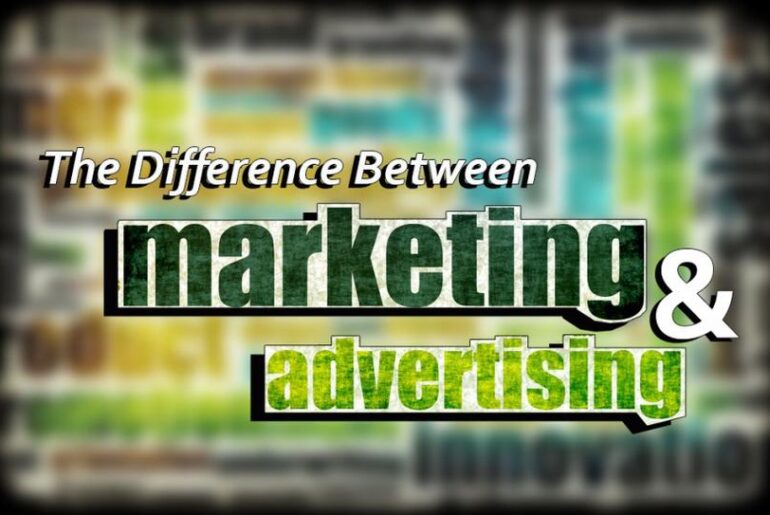By Shubhomita Bose
If you ask the person next to you about the difference between marketing and advertising, there’s a strong possibility you won’t get a clear answer. That’s because for many people, there’s only a subtle difference between marketing and advertising that’s often difficult to explain.
To be honest, advertising and marketing are closely related disciplines that have much in common. Yet they differ in many ways too. To see the differences and how each can benefit you as a small business owner, you must first understand the basics of both.
The Difference Between Marketing and Advertising
This section aims to unpack the distinct roles and impacts of marketing and advertising, clarifying how each contributes to the success of a small business. While closely related, understanding their unique functions is essential for strategic planning and growth.
What is Marketing?
Marketing, in simple terms, refers to the means of communication between a company and its target audience. The American Marketing Association defines it as “the activity, set of institutions, and processes for creating, communicating, delivering, and exchanging offerings that have value for customers, clients, partners, and society at large.”
Marketing involves techniques such as market segmentation, target group identification and market analysis to adopt the right strategy for customer engagement and product promotion.
Four primary elements that form the crux of marketing include Product, Price, Place and Promotion. These elements were introduced by marketer E. Jerome McCarthy. See the breakdown for each of these elements below.
Product
A product is seen as an item that addresses a consumer demand/need. It could be a tangible good or an intangible service. Choosing the right product is critical because it’s the cornerstone of your business and what attracts customers in the first place.
Price
This is the amount customers pay for the product. Price determines the company’s profitability and, thereby, whether or not the company will succeed. Setting the right price requires understanding your market and ensuring value for your customers.
Place
Products must be located in a place where consumers can access them. Place involves strategies such as selective distribution, franchising, and exclusive distribution. The right location or distribution channel can significantly increase a product’s success by making it easy for customers to find and purchase.
Promotion
All means of communication that a company adopts to provide information about the product are considered promotion. Promotion may include elements such as public relations, advertising, and sales promotion. Effective promotion increases the visibility and awareness of your product, encouraging more sales.
Let’s now try and understand what advertising means.

What is Advertising?
Advertising is defined as a form of marketing communication used by companies to promote or sell products and services. In essence, advertising is one of the components or subsets of marketing. In other words, if you think of marketing as a pie, then advertising will be an important slice of that pie.
The primary goal of advertising is to influence buying behavior by promoting a product, service, or company. To achieve this goal, advertising focuses on creative positioning and media. In doing so, advertising spreads awareness about what you have to offer.
According to the “Hierarchy of Effects” model put forth by Robert J. Lavidge and Gary A. Steiner, a buyer moves through six stages when making a purchase. These are awareness, knowledge, liking, preference, conviction and purchase. These six stages are further divided into three categories: Awareness and Knowledge (Cognitive), Liking and Preference (Affective) and Conviction and Purchase (Conative).
These three categories are explored a bit further below.
Cognitive
At this stage, consumers process the information provided to them through advertising communication. Advertising should, therefore, present information on the product’s benefits to pique the interest of the target audience. It’s essential that the message is clear and compelling to create a strong first impression and foster curiosity.
Affective
When consumers are in the affective stage, they should be able to start associating with the brand. Advertising should, therefore, resonate with the audience’s emotional aspects. This connection is vital for building brand loyalty and preference, as consumers are more likely to choose brands with which they feel an emotional attachment.
Conative
The conative stage refers to a stage where buyers are either actually making a purchase or simply showing the intent to purchase. At this stage, advertising evolves into a method of expediting the purchasing process. The conative stage refers to a stage where buyers are either actually making a purchase or simply showing the intent to purchase. At this stage, advertising evolves into a method of expediting the purchasing process. Effective advertising here encourages the consumer to take action, making it as easy as possible for them to make the purchase.
| Aspect |
Marketing |
Advertising |
| Definition |
Communication between a company and its target audience for creating, delivering, and exchanging offerings with value. |
A subset of marketing focused on communication to promote products or services. |
| Key Elements |
Product, Price, Place, Promotion |
Creative positioning and media |
| Product |
Addresses consumer demands/needs |
Promotes products or services |
| Price |
Determines profitability and success of the company |
Not directly related to pricing |
| Place |
Strategies for product distribution and accessibility |
Not related to product location |
| Promotion |
Includes public relations, advertising, sales promotion, and more |
Primarily focused on promotional activities |
| Goal |
Customer engagement and product promotion |
Influencing buying behavior |
| Hierarchy of Effects |
Cognitive, Affective, Conative |
Cognitive, Affective, Conative |
| Cognitive |
Providing product information to capture interest |
Presenting information on product benefits |
| Affective |
Creating an emotional connection with the brand |
Resonating with the audience’s emotions |
| Conative |
Facilitating the purchasing process |
Encouraging purchase or intent to purchase |

How Do Advertising and Marketing Differ?
As you can probably tell by now, marketing and advertising differ. As noted, marketing presents the overall picture of how a company promotes, distributes and prices its products or services. Advertising is a component of this overall picture.
Apart from advertising, a marketing plan includes other components such as public relations, sales and distribution strategies. All these elements are expected to work both independently and interdependently. All must work together to support the same marketing goal.
What’s interesting to note is that advertising typically accounts for the largest expense in most marketing plans. It’s not difficult to understand why. A well-executed ad campaign is run on multiple channels and at a high frequency to create the desired impact.
It’s also worth mentioning that creating a marketing plan is typically more time-intensive than creating an advertising campaign. Since marketing involves various disciplines such as market analysis, marketing research, positioning, and segmentation, it includes more strategizing than advertising.
In other words, advertising supports marketing by creating the right buzz about a company’s product or service. It generates curiosity in the minds of the target audience but ultimately works to support the overall marketing plan.

Blurring the Line Between Advertising and Marketing
In the digital era, the thin line that exists between marketing and advertising is getting increasingly blurred.
With search engine marketing (SEM) and display advertising, digital marketers are now working in the online ad space. Social networking is turning out to be the most preferred channel for most of these marketers who are pairing advertising with marketing to achieve the best results.
But that doesn’t necessarily mean it’s a good thing. Here’s why.
Many believe social media is a powerful marketing channel that should be used cautiously for advertising purposes.
Ted Rubin, Chief Social Marketing Officer at Collective Bias explains in a guest blog on IBM.com, “Ads have their place, but too many brands try to “advertise” within their social communications to drive immediate action. Not a good scenario, because over time that misuse of the medium diminishes trust and efforts to build relationships.
To leverage social media in the most optimal way, marketers need to have the right strategy for advertising and marketing. To begin with, it’s important to understand what customers want. Do they use social media to be bombarded with adverts and gimmicks? Or are they looking for information presented in an interesting way?
Brands that have checked the pulse of their target audience know how social media can benefit their integrated marketing communications strategy. Keeping that in mind, they know how to leverage it without overusing it.
For businesses, the key thing is to really understand how advertising and marketing work together to bring about the right results.

The Evolving Landscape of Advertising and Marketing
In today’s dynamic business environment, the line that once clearly separated advertising and marketing is becoming increasingly blurred. The digital era has ushered in new opportunities and challenges, pushing marketers to explore innovative ways of leveraging both disciplines for optimal results.
The Power of Digital Marketing
With the advent of search engine marketing (SEM) and display advertising, digital marketers now operate within the vast realm of online advertising. This transition has allowed businesses to harness the precision and reach of digital platforms to target specific audiences effectively. Social networking platforms, in particular, have emerged as favored channels for marketers, offering unique opportunities to blend advertising with broader marketing strategies.
The Cautionary Note
However, it’s crucial to exercise caution in the digital marketing landscape, especially within the realm of social media. While social media can be a powerful marketing channel, the overuse of advertising tactics can lead to adverse consequences. Bombarding audiences with adverts and gimmicks may yield short-term gains but can erode trust and hinder long-term relationship-building efforts.
Crafting the Right Strategy
Successful digital marketers understand the importance of crafting the right strategy that aligns with customer preferences. It’s essential to discern whether your audience seeks to be bombarded with advertisements or if they are looking for information presented in an engaging and meaningful way. This requires a deep understanding of your audience’s habits and values, ensuring that the strategy respects their online experience and adds value to their digital interactions.
Finding the Balance
For businesses navigating the digital landscape, the key lies in comprehending how advertising and marketing can work harmoniously to achieve the desired outcomes. Striking the right balance between engaging marketing content and strategically placed advertising is the path to building strong customer relationships and achieving sustainable business growth. Tailoring your approach to serve both your business objectives and your audience’s needs is crucial, as it ensures that your marketing efforts enhance rather than disrupt the user experience.
As the digital realm continues to evolve, small business owners must adapt their approaches to advertising and marketing, ensuring they leverage the latest tools and techniques effectively. By doing so, they can position themselves for success in an ever-changing business landscape.
| Aspect |
The Evolving Landscape of Advertising and Marketing |
| Digital Marketing |
The digital era has blurred the lines between advertising and marketing, ushering in opportunities for precision targeting and audience reach through online platforms like SEM and display advertising. |
| Social Networking |
Social networking platforms have become favored channels for marketers, offering unique opportunities to integrate advertising into broader marketing strategies. |
| Caution in Social Media |
While social media is a powerful marketing channel, overusing advertising tactics can lead to negative consequences, eroding trust and hindering long-term relationship-building efforts. |
| Crafting the Right Strategy |
Successful digital marketers tailor their strategies to align with customer preferences, understanding whether audiences prefer information or advertisements presented in an engaging way. |
| Finding the Balance |
Achieving the right balance between engaging marketing content and strategically placed advertising is key to building strong customer relationships and sustainable business growth. |
| Adaptation |
Small business owners must adapt their approaches to leverage the latest tools and techniques effectively in the ever-evolving digital landscape. |
Leveraging the Synergy of Advertising and Marketing
While advertising and marketing each have their unique roles and objectives, it’s their collaboration that often leads to the most significant impact. Here’s how businesses can harness the synergy between these two disciplines for a powerful competitive advantage:
- Integrated Campaigns: Develop comprehensive campaigns that seamlessly blend marketing strategies with advertising tactics. Ensure that your advertising efforts align with your broader marketing objectives and brand messaging.
- Consistent Messaging: Maintain a consistent and coherent message across all marketing and advertising channels. This consistency reinforces your brand identity and fosters trust among consumers.
- Data-Driven Insights: Utilize data analytics to gain valuable insights into consumer behavior and preferences. Incorporate these insights into both your marketing and advertising strategies to create more targeted and effective campaigns.
- Cross-Promotion: Promote your marketing content through your advertising channels and vice versa. For example, share blog posts or informative videos through paid advertising to maximize their reach and impact.
- Feedback Loops: Establish feedback mechanisms to gather insights from advertising campaigns and use them to refine your marketing strategies. The insights gained from advertising performance can inform your broader marketing decisions.
- Unified Goals: Ensure that your marketing and advertising teams share common goals and key performance indicators (KPIs). This alignment ensures everyone is working towards the same objectives and fosters a sense of collaboration.
- Customer Journey Mapping: Create a comprehensive customer journey map that includes touchpoints from both marketing and advertising. Understanding the customer’s path from awareness to conversion allows for a more integrated approach.
- Personalization: Leverage data-driven personalization techniques in both marketing and advertising efforts. Tailor your messaging to individual customer preferences for a more personalized and engaging experience.
- Testing and Optimization: Continuously test and optimize your advertising and marketing strategies. A/B testing can help determine which approaches are most effective and where adjustments are needed.
Read the complete Small Business Advertising Guide:



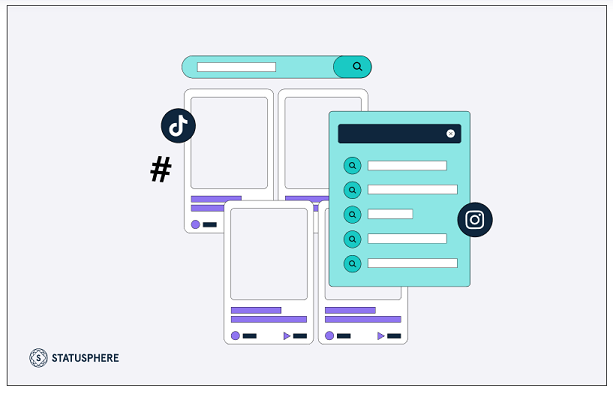
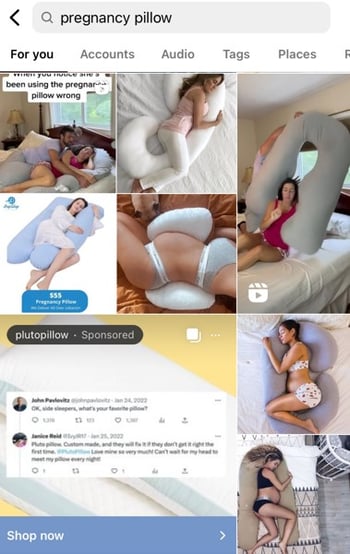
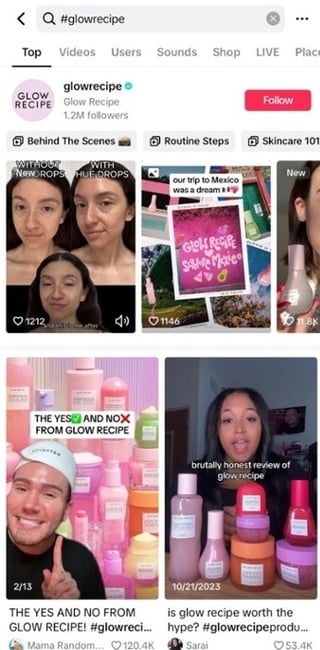
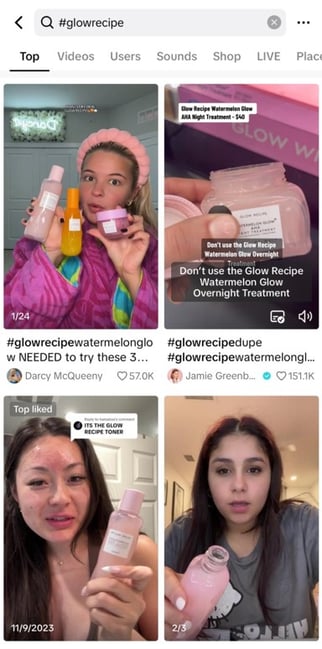


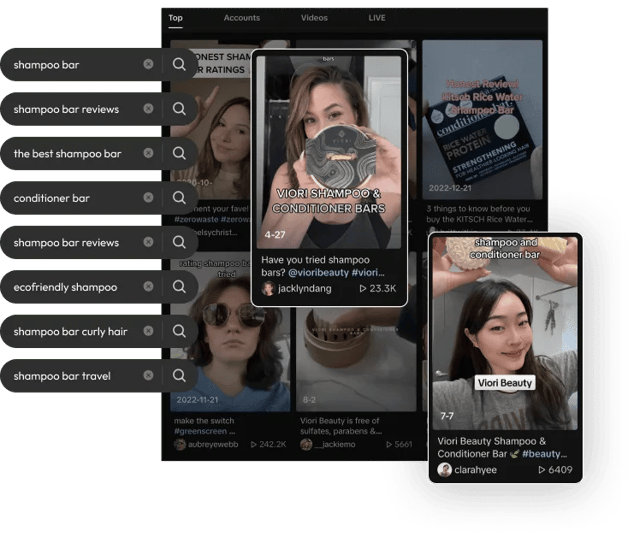 As a result, creators have more of a chance to “hit” with the algorithm and cement your brand’s social SEO rankings when they post on your behalf. Especially if you’re consistently partnering with a high volume of creators at once. This approach to influencer partnerships is becoming the norm for
As a result, creators have more of a chance to “hit” with the algorithm and cement your brand’s social SEO rankings when they post on your behalf. Especially if you’re consistently partnering with a high volume of creators at once. This approach to influencer partnerships is becoming the norm for 
